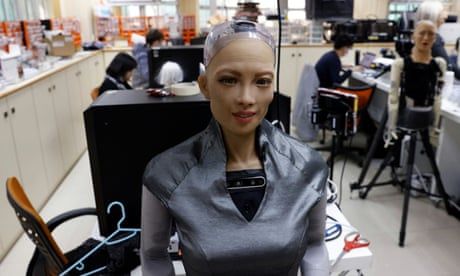
This thoughtful novel about a family trying to breathe clean air and not spend too long on their devices is mesmerising and scary
May loses her office job when the “hums” – humanoid robots – render her role obsolete. It’s hard to find work again. She hears of an opportunity to earn several months’ salary by receiving an experimental facial injection, and takes it. The injection will render May’s face unrecognisable to the ubiquitous hums. She’s a guinea pig for a form of adversarial AI, a technology designed to confound the processing of other tech. She returns home in pain, and looking very subtly different. “It’s really OK,” says her husband, Jem. “I just have a slightly new wife.”
Life is not easy for May and Jem and their two young children, Lu and Sy. Jem, formerly a photographer, takes gig work via an app, doing the odd jobs that rich people don’t want to do: removing corpses from pest traps, or clearing rotting food from a fridge. The air in their city is poisonous and the tap water is tainted. Rubbish blows around; birds, plants and animals are traumatised, shrivelled or extinct. May, Jem, Lu and Sy are all addicted to their devices, spending long periods alone in their individual “wooms”: networked isolation chambers, like a smartphone you can crawl inside.
Continue reading...